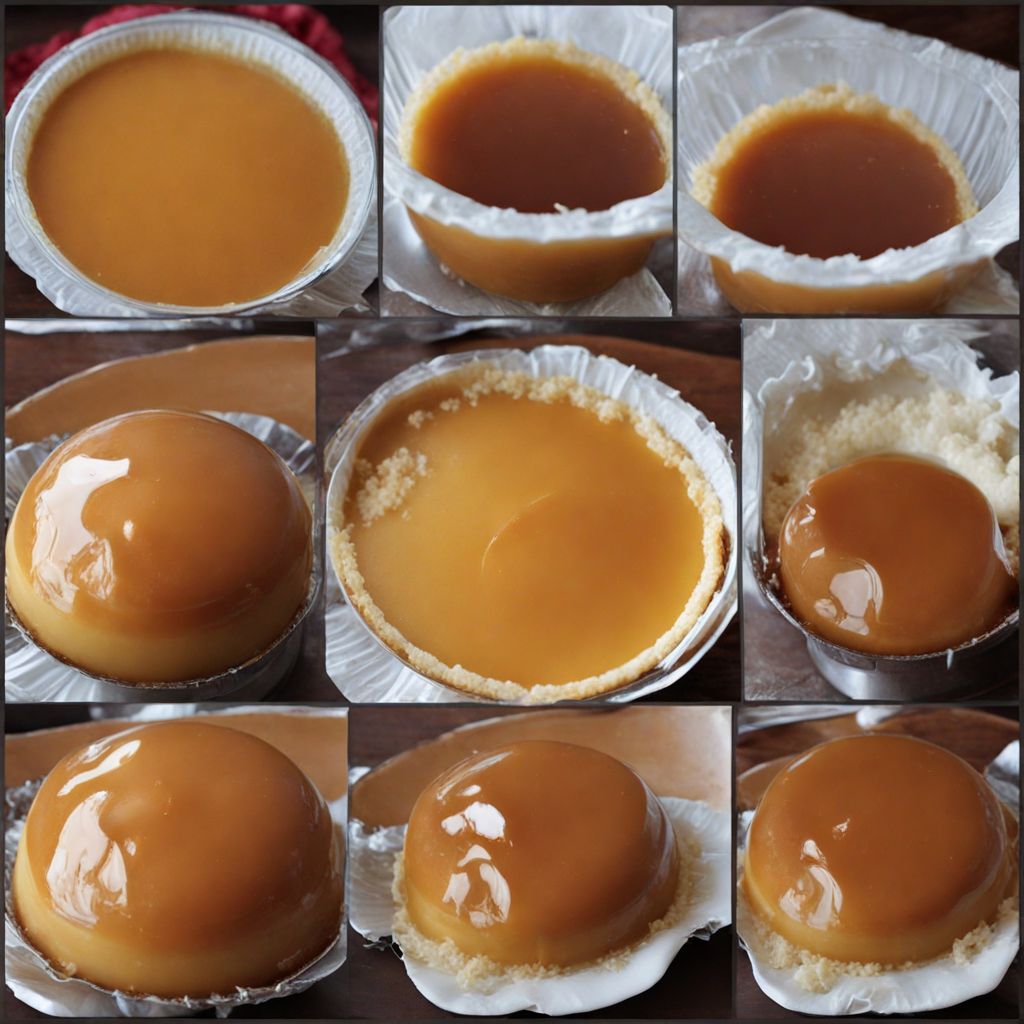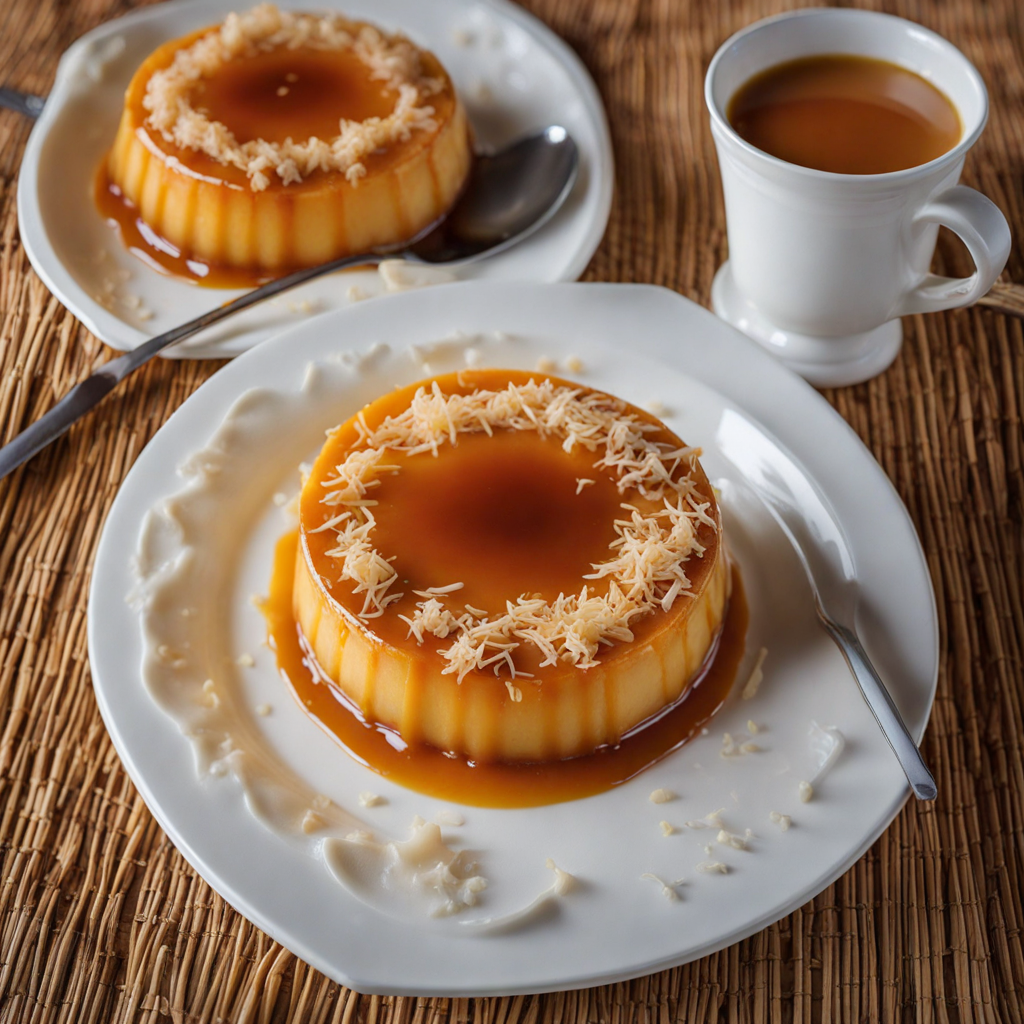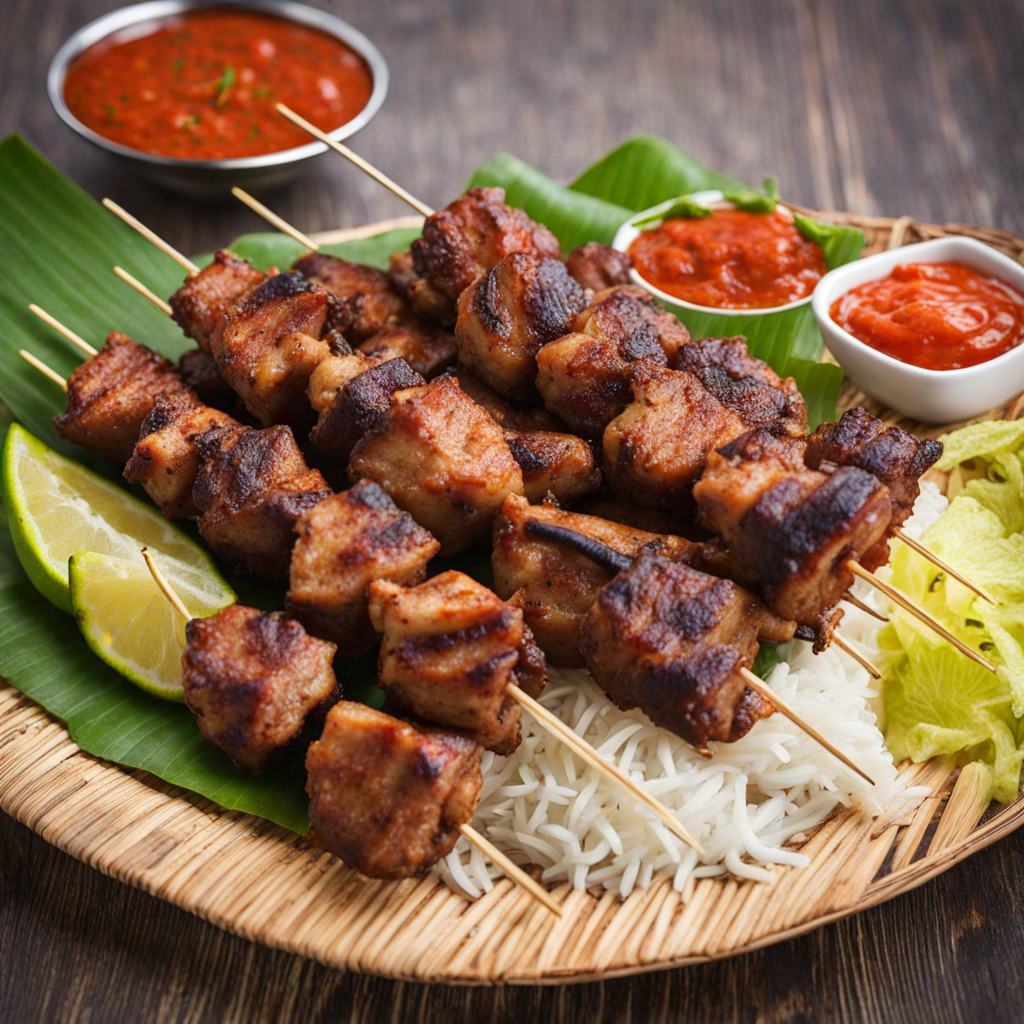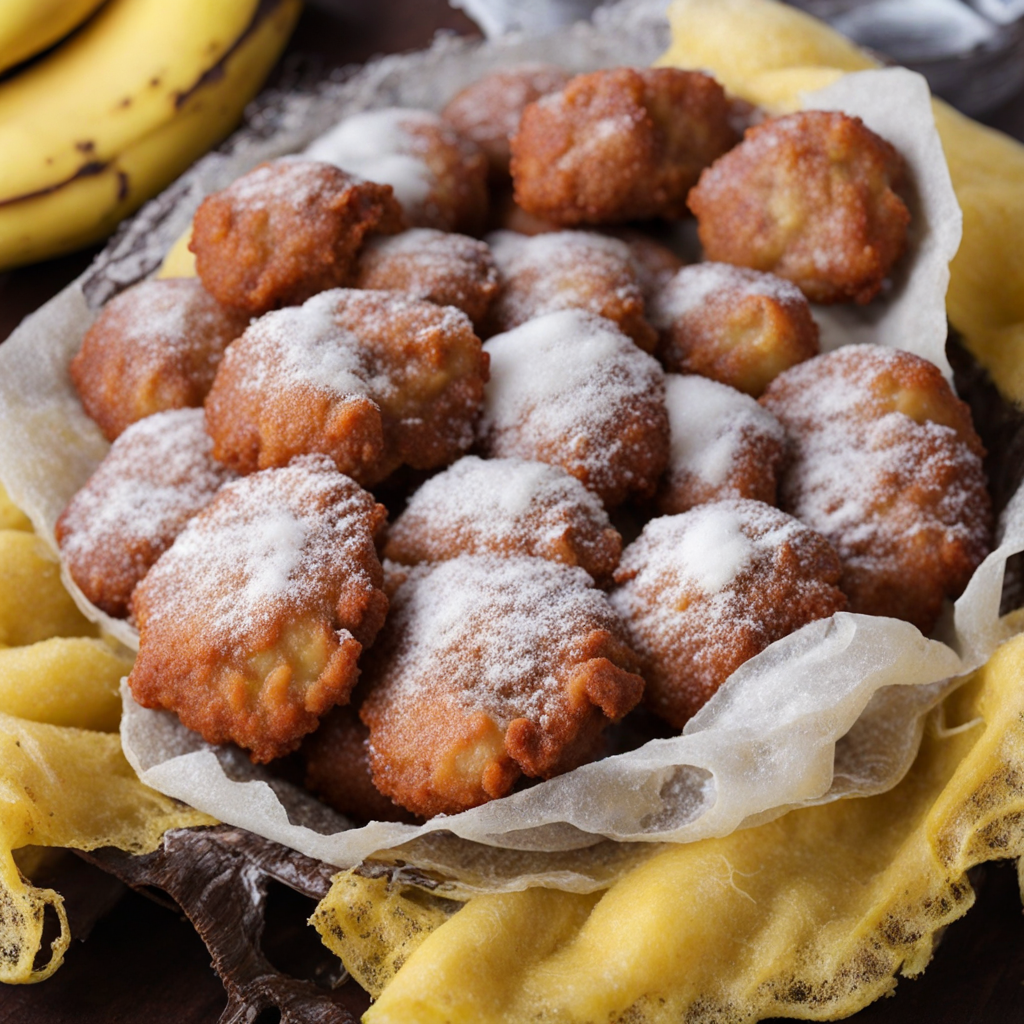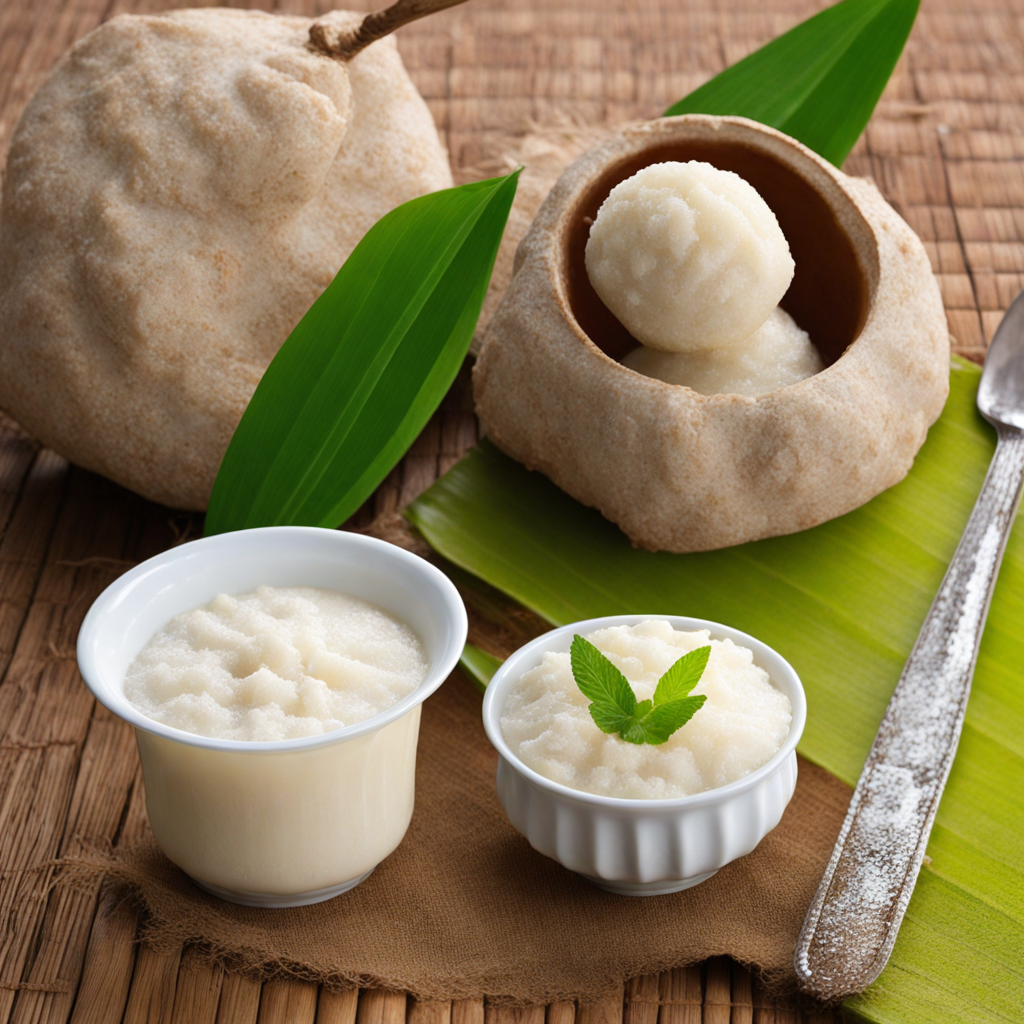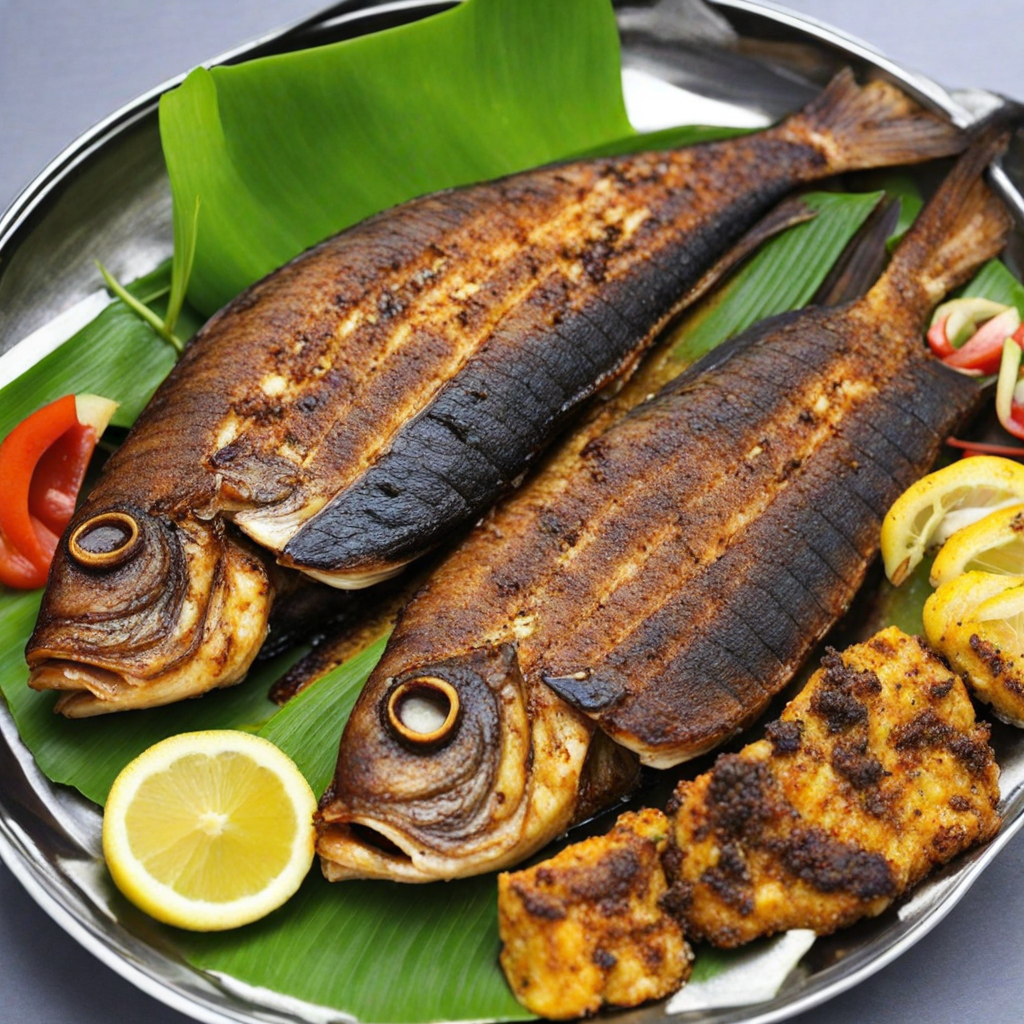Coconut Flan
Coconut Flan is a delightful dessert that hails from the Comoros, a picturesque archipelago situated off the eastern coast of Africa. This luscious treat combines the rich, creamy texture of traditional flan with the tropical essence of coconut, creating a harmonious blend of flavors that tantalize the palate. The base of the flan is made from eggs, sugar, and sweetened condensed milk, which are whisked together until smooth. The addition of coconut milk infuses the dish with a distinct, aromatic sweetness that transports you to a sun-soaked paradise with every bite. One of the standout features of Coconut Flan is its velvety, custard-like consistency, which is achieved by gently baking the mixture in a water bath. This method ensures even cooking and prevents the flan from curdling, resulting in a silky-smooth texture that melts in your mouth. As the flan bakes, it develops a delicate caramel layer on top, adding a touch of sophistication and a hint of bitterness that beautifully balances the sweetness of the coconut. Served chilled, Coconut Flan is often garnished with fresh coconut shavings or a sprinkle of toasted coconut flakes, enhancing its tropical appeal. The dessert is not only a feast for the taste buds but also a visual delight, with its golden caramel and creamy white layers creating an inviting presentation. Whether enjoyed as a special occasion treat or a simple indulgence, Coconut Flan from Comoros promises a delightful culinary journey that encapsulates the flavors of island life.
How It Became This Dish
Flan de Coco: A Culinary Treasure of Comoros #### Origins: The Birth of a Delicacy Nestled in the Indian Ocean, between Madagascar and the African mainland, the Comoros archipelago is a hidden gem known for its rich biodiversity, vibrant culture, and, notably, its culinary delights. Among these delights is Flan de Coco, a coconut flan that exemplifies the island's culinary heritage. The origins of Flan de Coco can be traced back to the islands' historical interactions with various cultures, including Arab, African, and French influences. Coconuts have long been a staple in the Comoros, thanks to the tropical climate that encourages their growth. The islands were once known as the "Islands of the Moon," and their lush landscapes provided not only coconuts but also an abundance of spices, fruits, and vegetables. The introduction of flan, a dessert with Spanish roots, arrived with the French colonial influence in the 19th century. This melding of cultures led to the creation of Flan de Coco, which combines the traditional custard base of flan with the island's beloved coconut. #### Cultural Significance: More Than Just a Dessert Flan de Coco holds a special place in the hearts of the Comorian people. Traditionally served during celebrations and religious holidays, this dessert symbolizes hospitality, community, and the abundance of nature's gifts. It is often prepared for family gatherings, weddings, and religious festivals, where it is shared among friends and loved ones. In Comorian culture, food is not merely sustenance; it serves as a means of expressing love, gratitude, and social bonds. The act of preparing Flan de Coco is often a communal activity, where family members come together to craft this delicate dessert. The preparation of the flan can take on a ritualistic quality, as key ingredients are sourced locally and often involve a connection to the land. The coconut is revered not just for its flavor but for its versatility; every part of the coconut can be used in Comorian cuisine—from the meat and milk to the husk. #### Ingredients and Preparation: A Symphony of Flavors The primary ingredients of Flan de Coco include coconut milk, sugar, eggs, and vanilla, with variations that may include spices such as nutmeg or cinnamon. The preparation begins with extracting fresh coconut milk, which is crucial for achieving the rich, creamy texture that defines the flan. The use of fresh ingredients reflects the Comorian philosophy of cooking—where local produce is favored, and meals are prepared from scratch. To make Flan de Coco, the coconut milk is combined with sugar and eggs to create a custard-like mixture. This blend is poured into a caramel-lined mold, which caramelizes under gentle heat. The flan is then baked in a water bath to ensure even cooking, resulting in a smooth and silky texture. Once cooled, it is inverted onto a plate, revealing a luscious caramel top that glistens in the light. The first bite offers a harmonious balance of sweetness and the tropical flavor of coconut, evoking the very essence of the islands. #### Evolution: Adapting to Modern Tastes Over the years, Flan de Coco has evolved while remaining rooted in its traditional origins. As globalization has increased, the dessert has found its way beyond the shores of the Comoros, gaining popularity in diaspora communities and among food enthusiasts around the world. Modern interpretations often introduce new elements, such as flavored syrups or fruit toppings, while maintaining the core components that define the original recipe. In contemporary Comoros, Flan de Coco has also adapted to modern dietary preferences. With an increasing awareness of health and nutrition, many home cooks have experimented with alternative sweeteners or dairy-free versions of the flan. Coconut cream, for instance, is sometimes used to enhance the coconut flavor while catering to those who may be lactose intolerant. This adaptability speaks to the resilience of Comorian cuisine, which continues to thrive in a rapidly changing culinary landscape. #### Flan de Coco Today: A Symbol of Heritage Today, Flan de Coco remains a cherished dessert among the Comorian people, embodying the islands' rich culinary heritage and cultural significance. It is not only a staple in homes and celebrations but also features prominently in restaurants that celebrate Comorian cuisine. For visitors to the islands, indulging in Flan de Coco is more than a treat; it is an immersive experience that connects them to the local culture and traditions. The dessert's popularity has also led to its inclusion in various food festivals and culinary events, where chefs showcase their interpretations of Flan de Coco, often telling stories of their heritage and the importance of coconut in their lives. These events serve as platforms for cultural exchange, allowing people from different backgrounds to appreciate the flavors and history of the Comoros. #### Conclusion: A Dessert with a Legacy Flan de Coco is a testament to the rich tapestry of Comorian culture, representing the harmonious blend of tradition and modernity. Its journey from the islands to the global stage illustrates not only the adaptability of this beloved dessert but also the enduring spirit of the Comorian people. As culinary enthusiasts continue to explore and celebrate the flavors of the Comoros, Flan de Coco stands as a delicious emblem of a vibrant culture, reminding us that food is a powerful vehicle for storytelling, connection, and celebration. In every silky bite of Flan de Coco lies a narrative of history, community, and a deep-rooted appreciation for the land that nurtures its ingredients. This dessert is more than a recipe; it is a legacy that continues to evolve, inviting all to partake in the sweetness of the Comoros.
You may like
Discover local flavors from Comoros


